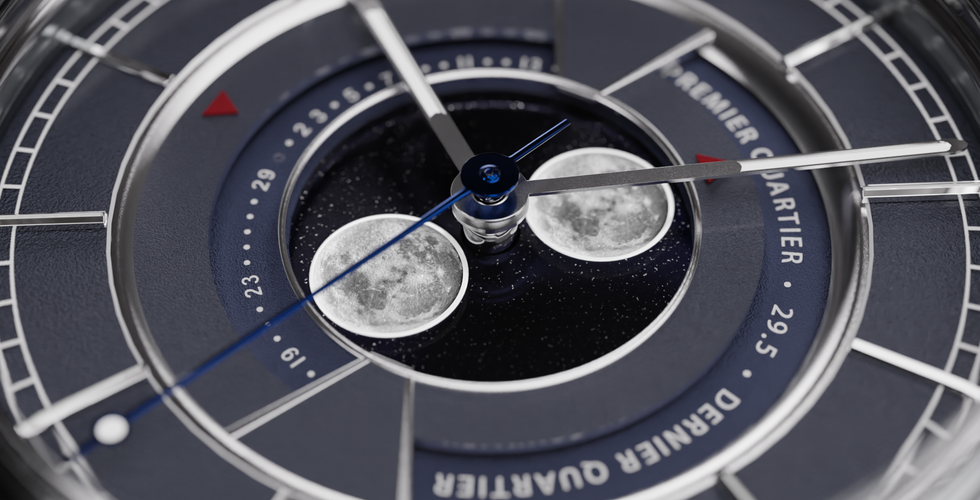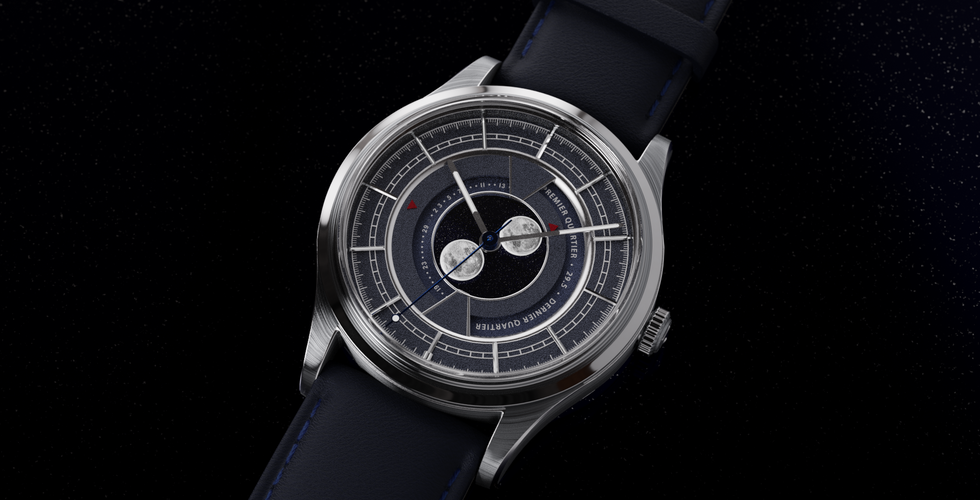STEP #3 • The choice of sketch
- Thibault
- Dec 18, 2023
- 4 min read
Updated: Apr 5, 2024
Dear community,
As we approach the end of the year, we embark on the final stage of the first chapter of the Ariane epic. There are now 1,700 of you who have joined the adventure and participated in this collaborative creation.
The previous stages were dedicated to sketching the initial draft, choosing the caliber, and constructing the moon disk.
Today, we are very excited to unveil the two drafts that have emerged from your creations and votes. For this stage, we invite you to rate and comment on two sketches on a dedicated voting page. The selected model will serve as the foundation for Chapter 2, during which every detail and component will be refined and reworked.
To fuel reflection and guide your choice, this article provides a more in-depth presentation and analysis of the two drafts, examining their structure and various technical constraints.
A two-stage skeleton disk ARIANE No. 17, an ancient labyrinth
Ariane No. 17 aims to be a witness to an ancient odyssey, a myth, and a rediscovered thread of creation—unfolding the lunar orb at its core.
Its number echoes Chapter 17 of Plutarch's "Life of Theseus," an ancient historian who documented various versions of the Ariadne myth.

A modern interpretation of moon phases
Over 55% of you voted for a skeleton moon disk with a needle on the moon configurator. Complimented by your creations with an open heart or minimalist approach, ARIANE No. 17 emerges from this remarkable fusion.
The uniqueness of its disk lies in a reversed interpretation of the lunar age. Unlike traditional moon phases with a full disk, here the disk is semi-skeleton, meaning it is hollow. It reveals a sub-dial with a fixed graduation behind it and moves like hands on a 29.50-day revolution.
A creation in 4 stages
The moon disks have 59 teeth, activated once a day by the caliber. This structure allows for a 360° rotation in 59 days, or 180° in 29.5 days. Therefore, the disk must be directly positioned on the movement, and nothing can (in theory) be below it. Unless the movement itself is decorated with a graduation, there is no room for a skeleton reading as proposed in the Ariane No. 17 model.
A solution developed in collaboration with AJS Production is to design the moon disk on two levels, with a base attached to the movement (allowing rotation) and a skeleton stage under which a part of the dial would fit. The dial must also be designed on two levels.
This method would allow the full part of the disk to be operated and move a second upper part in skeleton. The moon index and graduations would then be directly printed on the lower level of the dial and visible through the disk.

Beyond the layered construction that represents a significant technical challenge, the moon disk is not exempt from specific R&D. Several materials are considered to ensure its durability, including a central full part in steel (counterweight) connected to a lighter hollow part in aluminum (skeleton) to balance the whole. Different finishes and additions (magnifying glass) are under consideration.
Finally, it's worth noting that creativity is possible both on the disk, whose full part offers an ideal working surface (laser, printing, cutting), and on the layered dial (finish, decal, ...).
A three-part moon disk ARIANE No. 73, a space conquest
Ariane No. 73 aims to be a witness to a space odyssey, a technological and human conquest—with the lunar orb as the goal.
Its number echoes the launch of the European ARIANE Project in 1973.

To reivente the reading of the moon disk
More than 32% of you voted for a 3-level moon disk on the moon configurator. With many creations with an open heart, ARIANE No. 73 is born from this double request.
Its disk is designed on a single stage but divided into three distinct parts. Unlike a traditional moon phase, the graduation is not present on the dial but is directly inscribed on the disk. An index (red triangle) on the dial indicates the age of the moon.
Three moon windows
Since the disk is on a single plane under the dial, its construction is easier than for the Ariane No. 17 model. However, the uniqueness lies in its reading. A hollowed dial reveals three moon windows, offering multiple readings of its phases.

While the construction of the disk is more traditional, Ariane No. 73 gives more emphasis to the design of the dial. The focus is on the colors and finishes of the dial (matte white, textured blue, spiral steel, ...) as well as the shape of the moon windows.
The construction of the moon disk is also a design challenge, as it can follow a classic construction (two moons facing each other) or reveal a rotating full orb (CNC steel).
We hope these two sketches will inspire you and fuel your design proposals and ideas for reworkings. Ariane's horizon is gradually taking shape, and the question now is which base to build on. We'll close the first chapter with a single model, which we'll suggest you rework in the second chapter.
In early January, we'll be sharing with you an infographic with figures and a full progress report on the first chapter, with the unveiling of the chosen model.
Until then, we wish you all a wonderful holiday season.
The Mu:n Team


























Comments